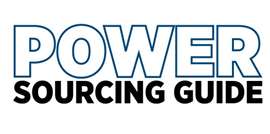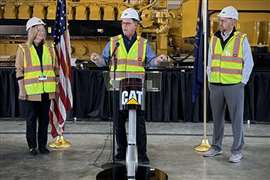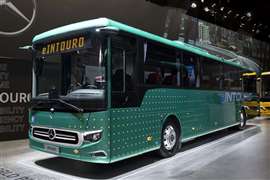Read this article in Français Deutsch Italiano Português Español
Material concept could make battery packs easier to recycle
04 September 2025
 Rendering of batteries made using new electrolyte material (Photo: Courtesy of MIT research team)
Rendering of batteries made using new electrolyte material (Photo: Courtesy of MIT research team)
A team at MIT (Massachusetts Institute of Technology) has published a paper outlining the development of a material which can be used as an electrolyte in a solid state battery, but then taken back to its original molecular components when submerged in an organic liquid.
The material would offer an alternative to the current battery recycling process which sees the pack shredded to form a ‘black mass’, which must then be passed through a series of chemical processes to reclaim each recyclable material.
“So far in the battery industry, we’ve focused on high-performing materials and designs, and only later tried to figure out how to recycle batteries made with complex structures and hard-to-recycle materials,” said the paper’s first author Yukio Cho.
“Our approach is to start with easily recyclable materials and figure out how to make them battery-compatible. Designing batteries for recyclability from the beginning is a new approach.”
Electrolytes in most li-ion battery packs are highly flammable and degrade over time to produce toxic byproducts which require special handling.
To create the more sustainable electrolyte, the team used a class of molecules known as aramid amphiphiles (AAs), which have a structure and stability said to mimic Kevlar (the material used in bulletproof vests).
The researchers then designed AAs to incorporate polyethylene glycol (PEG) at each end of the molecule. When these modified molecules are exposed to water they spontaneously form nanoribbons with ion-conducting PEG surfaces and a base which imitates Kevlar through tight hydrogen bonding. This nanoribbon structure can conduct ions across its PEG surface.
When added to water, millions of nanoribbons self-assemble to form a mass that can be hot-pressed into a solid state material.
“The material is composed of two parts,” Cho explained. “The first part is this flexible chain that gives us a nest, or host, for lithium ions to jump around. The second part is this strong organic material component that is used in the Kevlar. Those make the whole structure stable.
“Within five minutes of being added to water, the solution becomes gel-like, indicating there are so many nanoribbons formed in the liquid that they start to entangle each other. What’s exciting is we can make this material at scale because of the self-assembly behaviour.”
The team went on to construct a solid state cell using a lithium-ion phosphate cathode and a lithium titanium oxide anode, both common materials in modern battery packs. The nanoribbons successfully moved lithium ions between the electrodes, but it was noted that polarisation limited movement of the lithium ions during charging and discharging. This reduced performance when compared to ‘gold standard’ batteries.
“The lithium ions moved along the nanofiber all right, but getting the lithium ion from the nanofibers to the metal oxide seems to be the most sluggish point of the process,” said Cho.
When immersed in an organic solvent the material immediately dissolved, with each part of the material falling away – which would help with efficient recycling of the individual materials.
Cho said the material is a proof of concept that demonstrates the recycle-first approach.
“We don’t want to say we solved all the problems with this material. Our battery performance was not fantastic because we used only this material as the entire electrolyte for the paper, but what we’re picturing is using this material as one layer in the battery electrolyte. It doesn’t have to be the entire electrolyte to kick off the recycling process.”
The team will now look at optimising the material’s performance, while exploring ways to integrate these materials into existing battery designs.
“It’s very challenging to convince existing vendors to do something very differently,” said Cho. “But with new battery materials that may come out in five or 10 years, it could be easier to integrate this into new designs in the beginning.”
POWER SOURCING GUIDE
The trusted reference and buyer’s guide for 83 years
The original “desktop search engine,” guiding nearly 10,000 users in more than 90 countries it is the primary reference for specifications and details on all the components that go into engine systems.
Visit Now
STAY CONNECTED




Receive the information you need when you need it through our world-leading magazines, newsletters and daily briefings.
CONNECT WITH THE TEAM













